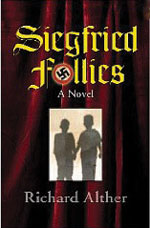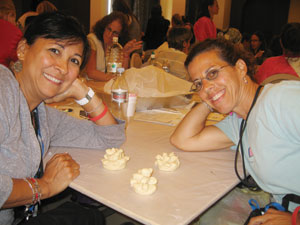How to resolve the Palestinian-Israeli conflict
Beautifully expressing his wishes and fantasy, the prophet Isaiah, who lived in the 8th century B.C.E., said, "…nation shall not lift up sword against nation, neither shall they learn war anymore." (Isaiah 2:4). That was, is, and will remain a fantasy for a long time. It is a fact that mankind’s entire history is replete with wars. This fact permits us to view the human race as a war-addicted species. Since eons ago, man’s aggressive behavior has not changed and it is not about to. Therefore, it seems axiomatic that in the future, we will continue to have wars — small wars, intermediate-size wars, and even a global war. Should the latter materialize, and the probability for that is high, it is likely to be fought with nuclear weapons. Such a war could end the existence of the human race. Obviously, we should spare no effort to avoid being dragged into a global war. It is widely known that the Palestinians’ ultimate aim is to annihilate the state of Israel. Not so well known is the fact that many Israelis subscribe to the motto "Masada shall never fall again." Thus, if in a future war with an Arab entity, Israel is pushed to the edge of the abyss, Israel will use its nuclear weapons, resulting in massive deaths and destruction on the Arab side. This, in turn, could spark World War III. To avoid the above, the Arab/Israeli conflict must be brought to a definitive end. Conditions should be created that would satisfy both the Palestinians and the Israelis, while realizing that neither side can have all its claims fulfilled. Also, it is important to include in the solution-formula a process that will eradicate from the Arab psyche the desire to destroy Israel. My research has led me to target two key elements involved in the conflict: one, the Israeli settlers in the West Bank, and two, the Arab population in Israel. When a Palestinian state is created, the Palestinian people in the West Bank will find it difficult and frustrating to zigzag around the Israeli settlements in their midst. Therefore, all the Israeli settlers will have to leave, and resettle in Israel. This will allow the Palestinians to start their country with a clean slate. In exchange, and to complete the solution, all the Israeli Arabs will have to leave Israel and resettle in the new Palestine, with the option to migrate to other countries. This will allow the Israelis to have their clean slate by not having an internal Arab problem. No Arabs in Israel and no Jews in the West Bank is the essence of the solution for the Arab/Israeli conflict. The Arab population in Israel presents a blatantly abnormal social situation not found in any other country. Over a million Arabs live in Israel. They make up about 20 percent of the total population. As Israeli citizens, they enjoy much more freedom and democratic living than their brethrens in any Arab country. They also enjoy the amenities the state of Israel provides to all of its citizens. However, they differ from their Jewish counterparts in two basic respects: One, they don’t serve in the army, and two, their allegiance is not to the state of Israel, but to Israel’s enemies, who pledge to destroy Israel. An American analogy for that would be that 60 million Americans (20 percent of the total population) champion the destruction of the United States. No doubt, there will be much screaming from many quarters against the proposed transfers of the two populations, with the loudest screams coming from the Israeli Arabs and the Jewish settlers. That is understandable. To ameliorate their pain, the transferees should be given every possible physical and emotional assistance. But once the dust settles, with the transfers completed, we are likely to see very positive results. The new situation will be considered a fait accompli by both sides and by the world at large. As such, the desire for Israel’s destruction will enter a process of fading away. The Palestinians, free from Israelis breathing down their necks, will be able to divert all of their energies toward building their new country. The former Israeli Arabs will take pleasure in supporting their new country rather than hating their previous one. No one will be able to accuse Israel of mistreating its Arab population, because there won’t be any. The Arab/Israeli conflict is like a patient. This patient has been extremely ill for a long time. He is going from bad to worse. The only way to save him is through a radical, painful surgery. Thus, the surgery — the population transfers — is performed, and the outcome is a success. A future historian of these events will finish his narrative writing, "… and tranquility descended on the region." Zeev Dickmann, Ph.D., is a retired professor of reproductive biology.



 Cinema lovers in Greater Kansas City do not need to travel to Cannes, Toronto or Jerusalem to attend a first-class film festival. Opportunity knocks starting next weekend when local audiences can find their very own slice of film nirvana in Overland Park at the 11th annual Kansas International Film Festival (KIFF). KIFF will take place Sept. 30-Oct.6 at the Glenwood Arts Theatre located inside the Metcalf South Shopping Center.
Cinema lovers in Greater Kansas City do not need to travel to Cannes, Toronto or Jerusalem to attend a first-class film festival. Opportunity knocks starting next weekend when local audiences can find their very own slice of film nirvana in Overland Park at the 11th annual Kansas International Film Festival (KIFF). KIFF will take place Sept. 30-Oct.6 at the Glenwood Arts Theatre located inside the Metcalf South Shopping Center. In his second novel, “Siegfried Follies,” Richard Alther explores the nature of cultural and religious identity. The novel follows the intertwining lives of blonde, blue-eyed Franz and J, a Jewish boy, in Nazi Germany. The plot spans nearly 30 years, but the novel’s scope is far broader; it reaches back to the beginnings of German and Jewish culture and asks fundamental questions about nation, race and family, drawing from sources as disparate as Wagner, “Mein Kampf” and the Torah.
In his second novel, “Siegfried Follies,” Richard Alther explores the nature of cultural and religious identity. The novel follows the intertwining lives of blonde, blue-eyed Franz and J, a Jewish boy, in Nazi Germany. The plot spans nearly 30 years, but the novel’s scope is far broader; it reaches back to the beginnings of German and Jewish culture and asks fundamental questions about nation, race and family, drawing from sources as disparate as Wagner, “Mein Kampf” and the Torah. Once upon a time, Hebrew schools operated on the assumption that a working knowledge of Hebrew was such a basic skill for Jewish youngsters that they would be eager to learn it no matter how dry and formal the presentation. However, in our time, when young people live in a world where they are bombarded by all sorts of dynamic visual imagery, the traditional textbook is as outmoded as an eight-track tape. Publishers of Hebrew texts, like those of secular texts, must strive for excitement in order to compete.
Once upon a time, Hebrew schools operated on the assumption that a working knowledge of Hebrew was such a basic skill for Jewish youngsters that they would be eager to learn it no matter how dry and formal the presentation. However, in our time, when young people live in a world where they are bombarded by all sorts of dynamic visual imagery, the traditional textbook is as outmoded as an eight-track tape. Publishers of Hebrew texts, like those of secular texts, must strive for excitement in order to compete. As I stood in the arrival Hall of Ben Gurion Airport, I began to spot them. Women, without the typical “been on a plane for way too long,” glazed look on their faces. Rather, with looks of excited anticipation, lugging colorful backpacks marked with the now all too familiar letters, JWRP.
As I stood in the arrival Hall of Ben Gurion Airport, I began to spot them. Women, without the typical “been on a plane for way too long,” glazed look on their faces. Rather, with looks of excited anticipation, lugging colorful backpacks marked with the now all too familiar letters, JWRP. The “diner” notion means many things to many people. In Kansas City, Town Topic has been (for me) the “diner” gold standard — particularly since the classic Nichol’s Lunch closed years back and the venerable Corner Restaurant (in Westport) shut down, more recently. A solid diner brings to bear a certain nostalgic vibe that somehow takes patrons back to a different era. Good burgers. Better chili. Eggs. Eating at the counter. Nothing fancy.
The “diner” notion means many things to many people. In Kansas City, Town Topic has been (for me) the “diner” gold standard — particularly since the classic Nichol’s Lunch closed years back and the venerable Corner Restaurant (in Westport) shut down, more recently. A solid diner brings to bear a certain nostalgic vibe that somehow takes patrons back to a different era. Good burgers. Better chili. Eggs. Eating at the counter. Nothing fancy.